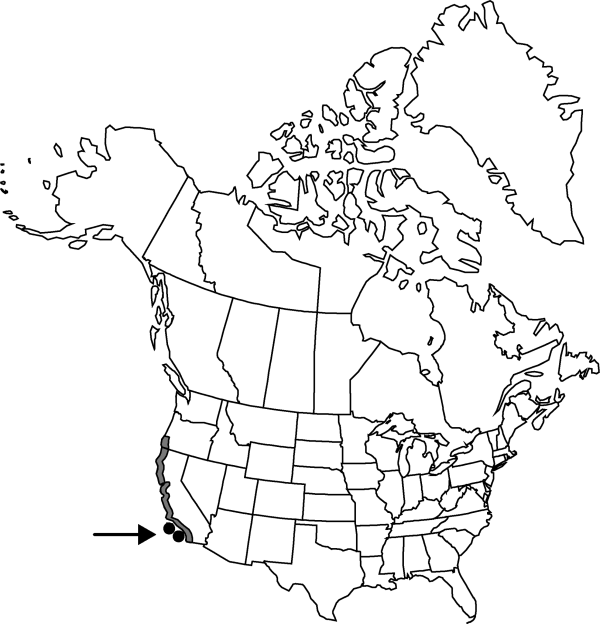Carpobrotus chilensis
J. Bot. 66: 324. 1928.
Stems to 2 m; gray fracturing bark with mahogany, shiny surface beneath. Leaves glaucous; blade rounded-triangular in cross-section, widest distal to middle, 4–7 × 0.5–1.2 cm, outer angle smooth. Inflorescences: pedicel 10–50 mm. Flowers 3–5 cm diam.; calyx lobes slightly triangular in cross-section, 10–20 mm, outer angle smooth; petals 100–140, rose-magenta, 2–3-seriate, 10–25 mm; stamens 100–250, white, 3–4-seriate, 4–7 mm, papillate proximally; anthers yellow; stigmas 2–3 mm, shorter than stamens, papillate adaxially. Fruits green to yellowish, oval to subglobose, 17–20 mm; receptacle tapering to pedicel. Seeds 200–350.
Phenology: Flowering year-round, mostly early spring–summer.
Habitat: Coastal dunes and bluffs, margins of estuaries, along roadsides
Elevation: 0-100 m
Distribution

Introduced; Calif., Oreg., Mexico, South America, s Africa
Discussion
The flowers of Carpobrotus chilensis open in the morning and close at night.
Most of the material currently found in California is probably of hybrid origin, potentially from five species. In previous floras, California material has been misidentified as Carpobrotus aequilaterus Haworth, which was published with a description of vegetative characters only and no type specimen. A. H. Haworth (1812) stated that it was most closely related to Mesembryanthemum elongatum Haworth, which today would be assigned to Conicosia. S. T. Blake (1969) selected two Salm-Dyck illustrations to typify C. aequilaterus. One illustration, from Chile, has been identified by the Bolus Herbarium in South Africa as C. deliciosus L. Bolus, a species from southwest Africa. The second illustration matches horticultural material in Australia but not material collected in California. Historical material collected in San Diego was identified by John Torrey in 1854 as Mesembryanthemum dimidiatum Haworth, now Carpobrotus dimidiatus (Haworth) N. E. Brown, from southeast Africa. The introduction would likely have been from Portuguese ships traveling around the Cape of Good Hope to the east in the 1500s. Material identified as C. dimidiatus is also found on the Juan Fernandez Islands off Chile, a reprovisioning stop for early sailing vessels. There is more recently introduced material in California of C. edulis, C. acinaciformis (Linnaeus) L. Bolus, and C. quadrifidus L. Bolus from southwest Africa. Of those, only C. edulis has naturalized.
Material collected today and identified as Carpobrotus chilensis is hybridized with C. edulis to such an extent that good material of the second parent may no longer exist in California. In Chile, there are five South African species—C. edulis, C. deliciosus, C. muirii L. Bolus, C. mellei L. Bolus, and C. dimidiatus—in addition to hybrids among these. All of these South African species found in Chile are referred to in the literature and on herbarium sheets as C. chilensis. R. A. Philippi (1864) designated a lectotype for C. chilensis. This specimen was a mixed sheet of C. edulis and a second species with purple flowers. The sheet was unfortunately cut apart, and the second fragment is now separated from the identifying labels.